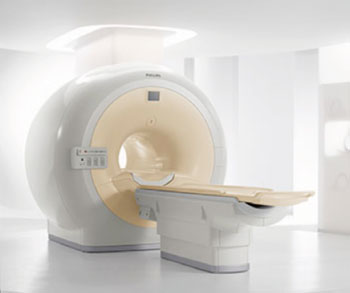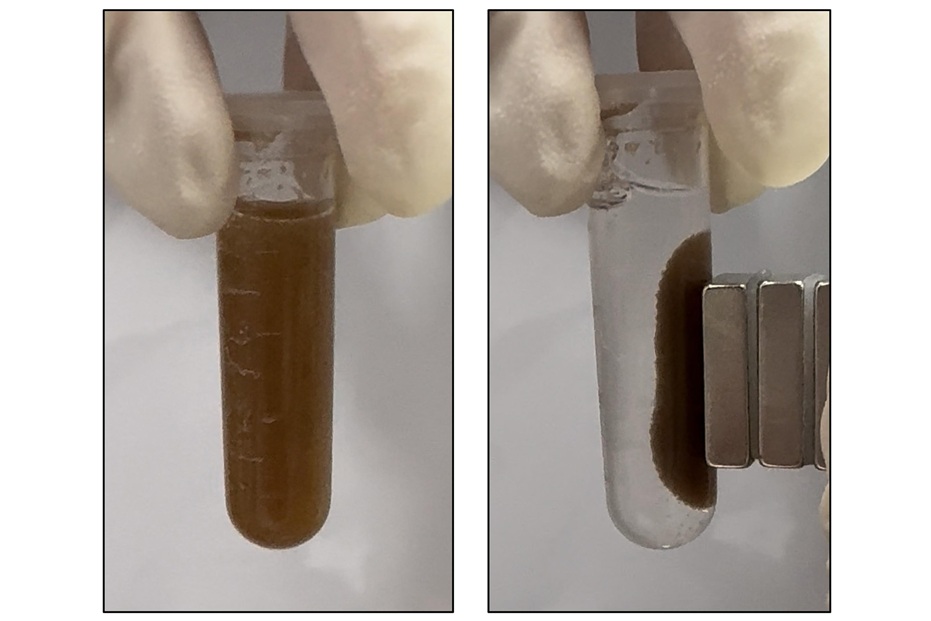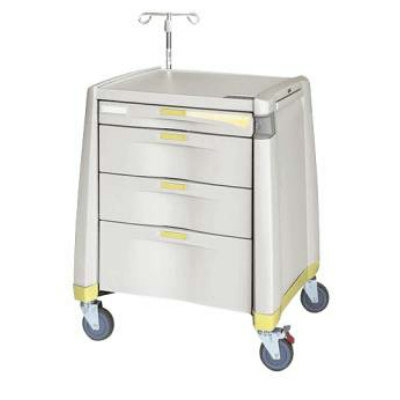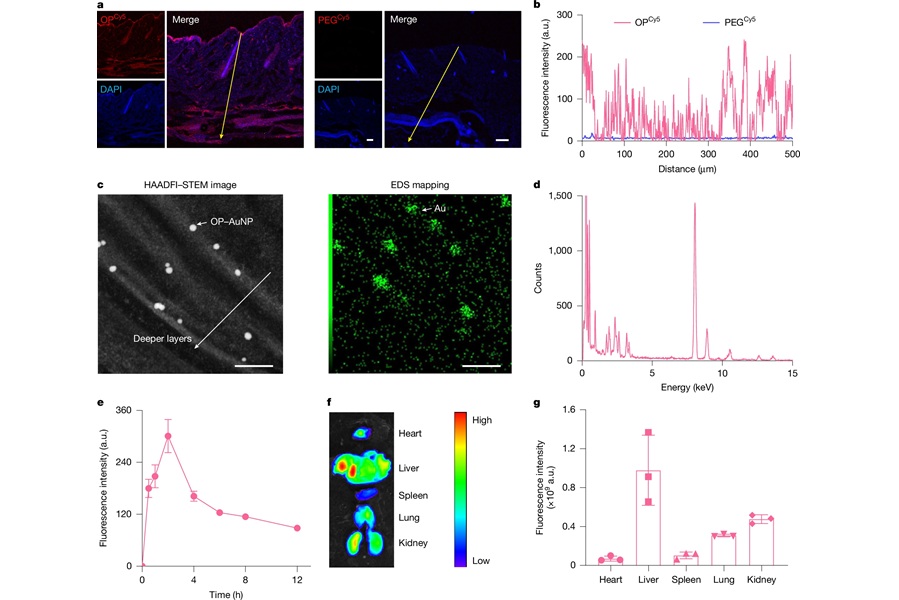Imaging Shows Asymptomatic Atherosclerosis Linked to Cognitive Impairment
|
By HospiMedica International staff writers Posted on 08 Dec 2014 |

Image: The Philips Healthcare Achieva MRI system (Photo courtesy of RSNA).
In an imaging study of nearly 2,000 adults, researchers found that an accumulation of plaque in the body’s major arteries was linked with mild cognitive impairment.
The study’s findings were conducted at the University of Texas (UT) Southwestern Medical Center (Dallas, USA) and presented December 2014 at the annual meeting of the Radiological Society of North America (RSNA), held in Chicago (IL, USA). “It is well established that plaque buildup in the arteries is a predictor of heart disease, but the relationship between atherosclerosis and brain health is less clear,” said Christopher D. Maroules, MD, a radiology resident at UT Southwestern Medical Center in Dallas. “Our findings suggest that atherosclerosis not only affects the heart but also brain health.”
Atherosclerosis is a disorder in which cholesterol, fat, and other substances gather in the arteries, forming a substance called plaque that can build up, restricting blood flow. It can occur in any artery of the body, including the carotid, which supplies blood to the brain, coronary arteries and the aorta, which carries oxygenated blood from the heart through the abdomen to the rest of body.
In the study, researchers analyzed the test results of 1,903 participants (mean age, 44 years) in the Dallas Heart Study, a multiethnic population-based study of adults from Dallas County, Texas. The participants included both men and women who had no symptoms of cardiovascular disease. Study participants completed the Montreal Cognitive Assessment (MoCA), a 30-point standardized test for detecting mild cognitive impairment, and underwent magnetic resonance imaging (MRI) of the brain to identify white matter hyperintensity (WMH) volume. Bright white spots known as high signal intensity areas on a brain MR images indicate abnormal changes within the white matter. “Increased white matter hyperintensity volume is part of the normal aging process,” Dr. Maroules explained. “But excessive WMH volume is a marker for cognitive impairment.”
Study participants also underwent imaging exams to measure the buildup of plaque in the arteries in three distinct vascular areas of the body: MRI to measure wall thickness in the carotid arteries and the abdominal aorta, and computed tomography (CT) to measure coronary artery calcium, or the amount of calcified plaque in the arteries of the heart.
Using the findings, researchers performed a statistical regression to correlate the incidence of atherosclerosis and mild cognitive impairment. After adjusting for traditional risk factors for atherosclerosis, including age, ethnicity, male sex, diabetes, hypertension, smoking, and body mass index, they found independent relationships between atherosclerosis in all three vascular areas of the body and cognitive health, as measured by MoCA scores and white matter hyperintensity volume on MR images.
Individuals in the highest quartile of internal carotid wall thickness were 21% more likely to have cognitive impairment as measured by a low MoCA score. An increasing coronary artery calcium score was predictive of large white matter intensity volume on MRI. “These results underscore the importance of identifying atherosclerosis in its early stages, not just to help preserve heart function, but also to preserve cognition and brain health,” Dr. Maroules said.
Dr. Maroules noted that the MRI and CT imaging techniques provide valuable prognostic information about an individual’s downstream health risks. “Plaque buildup in blood vessels throughout the body offers us a window into brain health,” he said. “Imaging with CT and MRI has an important role in identifying patients who are at a higher risk for cognitive impairment.”
RSNA (Oak Brook, IL, USA) is an association of more than 54,000 radiologists, radiation oncologists, medical physicists and related scientists, encouraging excellence in patient care and health care delivery through education, research and technologic advances.
Related Links:
University of Texas Southwestern Medical Center
The study’s findings were conducted at the University of Texas (UT) Southwestern Medical Center (Dallas, USA) and presented December 2014 at the annual meeting of the Radiological Society of North America (RSNA), held in Chicago (IL, USA). “It is well established that plaque buildup in the arteries is a predictor of heart disease, but the relationship between atherosclerosis and brain health is less clear,” said Christopher D. Maroules, MD, a radiology resident at UT Southwestern Medical Center in Dallas. “Our findings suggest that atherosclerosis not only affects the heart but also brain health.”
Atherosclerosis is a disorder in which cholesterol, fat, and other substances gather in the arteries, forming a substance called plaque that can build up, restricting blood flow. It can occur in any artery of the body, including the carotid, which supplies blood to the brain, coronary arteries and the aorta, which carries oxygenated blood from the heart through the abdomen to the rest of body.
In the study, researchers analyzed the test results of 1,903 participants (mean age, 44 years) in the Dallas Heart Study, a multiethnic population-based study of adults from Dallas County, Texas. The participants included both men and women who had no symptoms of cardiovascular disease. Study participants completed the Montreal Cognitive Assessment (MoCA), a 30-point standardized test for detecting mild cognitive impairment, and underwent magnetic resonance imaging (MRI) of the brain to identify white matter hyperintensity (WMH) volume. Bright white spots known as high signal intensity areas on a brain MR images indicate abnormal changes within the white matter. “Increased white matter hyperintensity volume is part of the normal aging process,” Dr. Maroules explained. “But excessive WMH volume is a marker for cognitive impairment.”
Study participants also underwent imaging exams to measure the buildup of plaque in the arteries in three distinct vascular areas of the body: MRI to measure wall thickness in the carotid arteries and the abdominal aorta, and computed tomography (CT) to measure coronary artery calcium, or the amount of calcified plaque in the arteries of the heart.
Using the findings, researchers performed a statistical regression to correlate the incidence of atherosclerosis and mild cognitive impairment. After adjusting for traditional risk factors for atherosclerosis, including age, ethnicity, male sex, diabetes, hypertension, smoking, and body mass index, they found independent relationships between atherosclerosis in all three vascular areas of the body and cognitive health, as measured by MoCA scores and white matter hyperintensity volume on MR images.
Individuals in the highest quartile of internal carotid wall thickness were 21% more likely to have cognitive impairment as measured by a low MoCA score. An increasing coronary artery calcium score was predictive of large white matter intensity volume on MRI. “These results underscore the importance of identifying atherosclerosis in its early stages, not just to help preserve heart function, but also to preserve cognition and brain health,” Dr. Maroules said.
Dr. Maroules noted that the MRI and CT imaging techniques provide valuable prognostic information about an individual’s downstream health risks. “Plaque buildup in blood vessels throughout the body offers us a window into brain health,” he said. “Imaging with CT and MRI has an important role in identifying patients who are at a higher risk for cognitive impairment.”
RSNA (Oak Brook, IL, USA) is an association of more than 54,000 radiologists, radiation oncologists, medical physicists and related scientists, encouraging excellence in patient care and health care delivery through education, research and technologic advances.
Related Links:
University of Texas Southwestern Medical Center
Latest Critical Care News
- Nasal Drops Fight Brain Tumors Noninvasively
- AI Helps Optimize Therapy Selection and Dosing for Septic Shock
- Glowing Bacteria ‘Pills’ for Detecting Gut Diseases Could Eliminate Colonoscopies
- Skin-Permeable Polymer Patch Delivers Insulin Non-Invasively Through Skin
- Nanogel Technology Almost 100% Effective in Destroying Drug-Resistant Bacteria Within Hours
- Wearable Ultrasound Sensor Delivers Noninvasive Treatment Without Surgery
- Gel-Free ECG System to Transform Heart Health Diagnosis
- Biodegradable Patch Repairs Damaged Tissue After Heart Attack
- Magnetically Guided Microrobots to Enable Targeted Drug Delivery

- Smart Nanomaterials Detect and Treat Traumatic Brain Injuries Simultaneously
- Earlier Blood Transfusion Could Reduce Heart Failure and Arrhythmia in Heart Disease Patients
- 'Smart' Shirt Detects Epileptic Seizures in Real Time
- Skin Patch Measures Effectiveness of Flu/COVID Vaccines in 10 Minutes
- Complete Revascularization Reduces Risk of Death from Cardiovascular Causes
- Tiny Fish-Inspired Robots Navigate Through Body to Deliver Targeted Drug Therapy
- Coronary Artery Stenosis Could Protect Patients from Pulmonary Embolism Effects
Channels
Critical Care
view channel
Nasal Drops Fight Brain Tumors Noninvasively
Glioblastoma is one of the most aggressive and fatal brain cancers, progressing rapidly and leaving patients with very limited treatment options. A major challenge has been delivering effective therapies... Read more
AI Helps Optimize Therapy Selection and Dosing for Septic Shock
Septic shock is a life-threatening complication of sepsis and remains a leading cause of hospital deaths worldwide. Patients experience dangerously low blood pressure that can rapidly lead to organ failure,... Read more
Glowing Bacteria ‘Pills’ for Detecting Gut Diseases Could Eliminate Colonoscopies
Diagnosing gastrointestinal diseases such as colitis and colorectal cancer often relies on colonoscopy, an invasive procedure that many patients avoid despite ongoing symptoms like bleeding, cramping, and diarrhoea.... Read moreSurgical Techniques
view channelNovel Endoscopy Technique Provides Access to Deep Lung Tumors
Detecting lung cancer early can save lives, but diagnosing small tumors deep in the outer regions of the lungs remains a major clinical challenge. Although CT scans frequently identify tiny suspicious... Read more
New Study Findings Could Halve Number of Stent Procedures
When a coronary artery becomes acutely blocked during a heart attack, opening it immediately is essential to prevent irreversible damage. However, many patients also have other narrowed vessels that appear... Read morePatient Care
view channel
Revolutionary Automatic IV-Line Flushing Device to Enhance Infusion Care
More than 80% of in-hospital patients receive intravenous (IV) therapy. Every dose of IV medicine delivered in a small volume (<250 mL) infusion bag should be followed by subsequent flushing to ensure... Read more
VR Training Tool Combats Contamination of Portable Medical Equipment
Healthcare-associated infections (HAIs) impact one in every 31 patients, cause nearly 100,000 deaths each year, and cost USD 28.4 billion in direct medical expenses. Notably, up to 75% of these infections... Read more
Portable Biosensor Platform to Reduce Hospital-Acquired Infections
Approximately 4 million patients in the European Union acquire healthcare-associated infections (HAIs) or nosocomial infections each year, with around 37,000 deaths directly resulting from these infections,... Read moreFirst-Of-Its-Kind Portable Germicidal Light Technology Disinfects High-Touch Clinical Surfaces in Seconds
Reducing healthcare-acquired infections (HAIs) remains a pressing issue within global healthcare systems. In the United States alone, 1.7 million patients contract HAIs annually, leading to approximately... Read moreHealth IT
view channel
EMR-Based Tool Predicts Graft Failure After Kidney Transplant
Kidney transplantation offers patients with end-stage kidney disease longer survival and better quality of life than dialysis, yet graft failure remains a major challenge. Although a successful transplant... Read more
Printable Molecule-Selective Nanoparticles Enable Mass Production of Wearable Biosensors
The future of medicine is likely to focus on the personalization of healthcare—understanding exactly what an individual requires and delivering the appropriate combination of nutrients, metabolites, and... Read moreBusiness
view channel
Philips and Masimo Partner to Advance Patient Monitoring Measurement Technologies
Royal Philips (Amsterdam, Netherlands) and Masimo (Irvine, California, USA) have renewed their multi-year strategic collaboration, combining Philips’ expertise in patient monitoring with Masimo’s noninvasive... Read more
B. Braun Acquires Digital Microsurgery Company True Digital Surgery
The high-end microsurgery market in neurosurgery, spine, and ENT is undergoing a significant transformation. Traditional analog microscopes are giving way to digital exoscopes, which provide improved visualization,... Read more
CMEF 2025 to Promote Holistic and High-Quality Development of Medical and Health Industry
The 92nd China International Medical Equipment Fair (CMEF 2025) Autumn Exhibition is scheduled to be held from September 26 to 29 at the China Import and Export Fair Complex (Canton Fair Complex) in Guangzhou.... Read more















